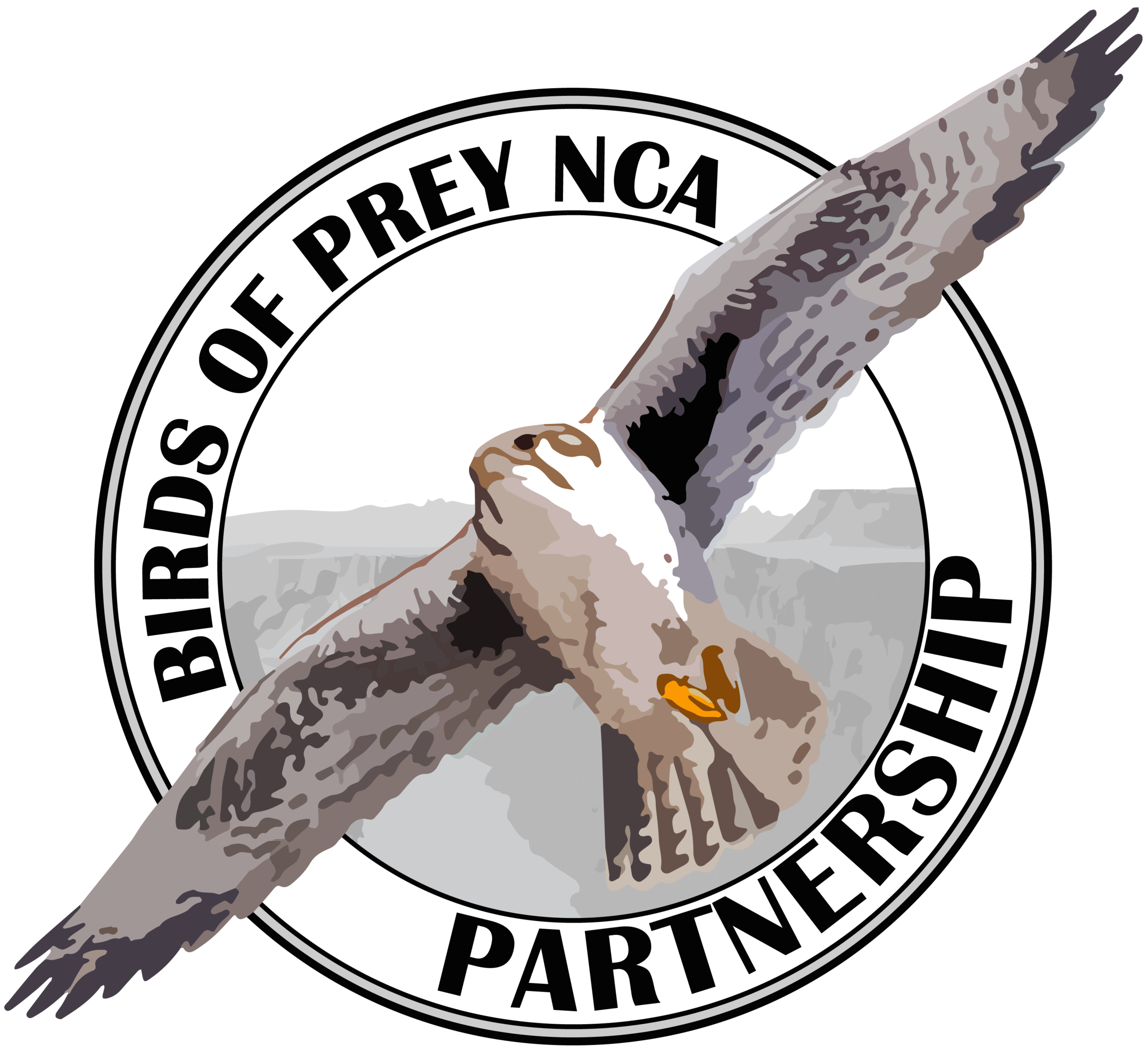Addressing ferruginous hawk research gaps in the Morley Nelson Snake River Birds of Prey NCA
By Annabel Christiansen
I recently had the opportunity to head out in the NCA to observe the work taking place as a part of the ferruginous hawk project that the Birds of Prey NCA Partnership (BOPP) and the Bureau of Land Management (BLM) have been collaborating on.
What is a ferruginous hawk?
The ferruginous hawk, Buteo regalis, is among the largest and heaviest of the 27 Buteo hawk species. They thrive in grasslands and open-country, including dry prairie and sagebrush-steppe ecosystems, which makes the NCA the perfect habitat. Because they are incredibly sensitive to environmental factors associated with climate change, as well as human disturbance, they can act as an ‘indicator species’ for overall ecosystem health.
Within the state of Idaho, ferruginous hawks are listed as a Species of Greatest Conservation Need, and are a BLM Type 2 Sensitive Species. Their decline in our state can be attributed to the loss of suitable habitat (caused by human development, invasion of shrub-steppe habitats by exotic annual grasses, and increased fire frequency).
What is this project all about?
Because of their conservation status, this species is a management priority for BLM. The ferruginous hawk project aims to address existing research gaps regarding the distribution and demography within the NCA.
The Project aims to answer three key questions regarding the ferruginous hawk population in the NCA:
How many breeding territories in the study area are occupied each year?
How many breeding pairs of hawks are successful? (See notes on what ‘success’ means below.)
How many nestlings reach fledging age each season?
How large is the NCA’s ferruginous hawk population?
The NCA is much too large for the small research team to survey each season — includes over 480,000 acres of canyons, buttes, and rock outcroppings, along with a vast area of “benchlands” above the Snake River Canyon. Because the NCA is so large, the project focuses on nesting territories on the benchlands, north of the Snake River. Within the study area, there are about 80 territories where ferruginous hawks are known to nest, and roughly 30-35 of them are occupied each breeding season. Within some of these territories, nesting platforms have been constructed to assist the hawks in providing habitation, giving them a safe space to nest - high above potential ground predators such as badgers, foxes, bobcats, and coyotes.
What would success look like?
‘Success’ is a broad term - One way that BOPP and BLM track success is by documenting nesting success and productivity. A nesting attempt is considered to be successful if at least one nestling survives to fledging age (36 days old), and productivity is the number of nestlings that reach fledging age (0-5 nestlings per nest). This baseline reproductive data is vital to land managers and helps inform their management decisions.
A large percentage of young fledglings do not survive long after leaving the nest due to predation, difficulty hunting on their own, and other natural factors. Unfortunately, once young hawks leave the nest, they become extremely difficult to track, so little is known about how many survive their first migration and return to the NCA to enter the breeding population. With all of this in mind, measuring success can be tricky - which is why this research is so important and why long-term monitoring is required.
On our recent visit we spent the day visiting some of them, checking for nestlings, and then banding them. We also collected health and wellbeing data. Along with Joe Weldon, the BLM’s NCA biologist, we were joined by Steve Alsup, BOPP’s Director, as well as Andrew Baker, a fellow BOPP intern, and Libby Mojica, a student from Colorado State University who is conducting her Ph.D. research on the conservation ferruginous hawks throughout their breeding range.
Out of the 5 platforms we visited, only 1 had young at the perfect age to band, which is usually a week or two before they fledge (25 to 32 days old). We collected and banded 4 nestlings, and gathered developmental data, such as weight, leg, bill, and talon measurements. Data collected during nestling processing goes into a long-term database and can be used to address additional research questions and inform land management decisions. Having the young in hand also allows researchers to more accurately age nestlings, which helps them determine the ideal time to return to the territory for final nesting success and productivity observations.
Annabel’s reflections
It was an amazing experience being able to witness the ferruginous hawk project in action - these birds are an important part of the ecosystem within the NCA, and it was great to see them well and thriving. The team was so knowledgeable, and it was a treat to work with them for the day and see some cute ferug babies!
Find out more about BOPP’s work here
Sign up to our monthly newsletter to keep up to date with everything happening in the NCA




